When you are in Rome for the first time, you should do what everybody else is doing: walk past the Roman ruins, visit the Vatican museums, jump into the Fontana Trevi.

For the second time, rather than doing all of that again, you should try something else. Like jump into another fountain, so-to-speak.

Extend your focus: go wider and deeper at the same time, picking a place where you have not been or look for new angles to see familiar places from a different perspective.
It appears that a good place to start would be where it all started, on the seven hills of Rome.
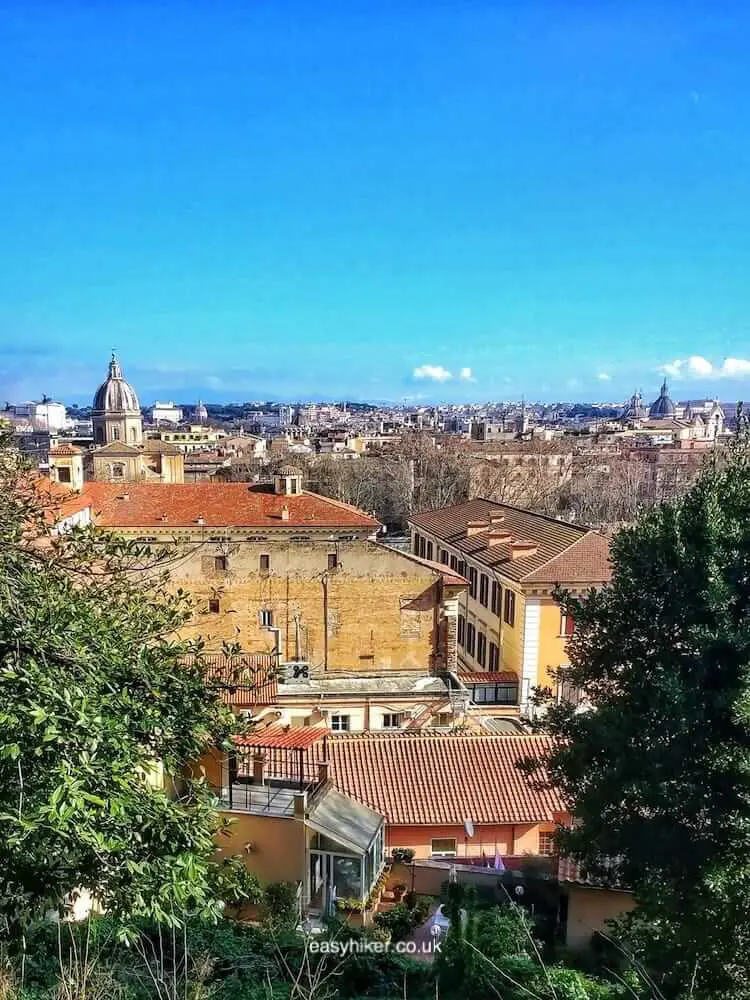
In reality, however, this is a tricky proposition. It is easy to assume that the seven hills of Rome cover the length and width of the present-day Centro Storico.
In reality, however, everything on the right bank of the Tiber was developed more than a thousand years after the city’s foundation – including famous historical quarters such as the Vatican and Trastevere – and the left bank quarter around Piazza Navona, called the Campus Martius in ancient times, was a sparsely inhabited swamp for much of antiquity and only properly settled in the Middle Ages.
The original seven hills, meanwhile, are huddled closely together in a small corner of today’s city.
It is also easy to assume that Rome’s original structure is somehow reflected by the outlines of the city’s historic quarters or the boundaries of modern administrative districts, the rioni. This is not the case either.
The development of Rome’s ancient quarters has largely followed the drumbeat of history and economics rather than the contingencies of topography – while the boundaries of the rioni appear to follow yet another, whimsically bureaucratic logic.
For the visitor, the hills of Rome are interesting in different ways. Capitolinus, Palatinus, Caelius form the heart of the antique city, and if you have come to see ruins, this is where you should be heading.
If, however, you are looking for a fuller experience of Rome and a part of town that, while being rooted in antiquity, is not merely a museum, you should head for the quarter of Monti that stretches across the three hills of Quirinalis, Esquilino and Viminalis in the northeast of the town center.
There is no way around it: for the Full Monti of Rome, you have to climb the “mountains”, the monti, that have given this quarter its name.
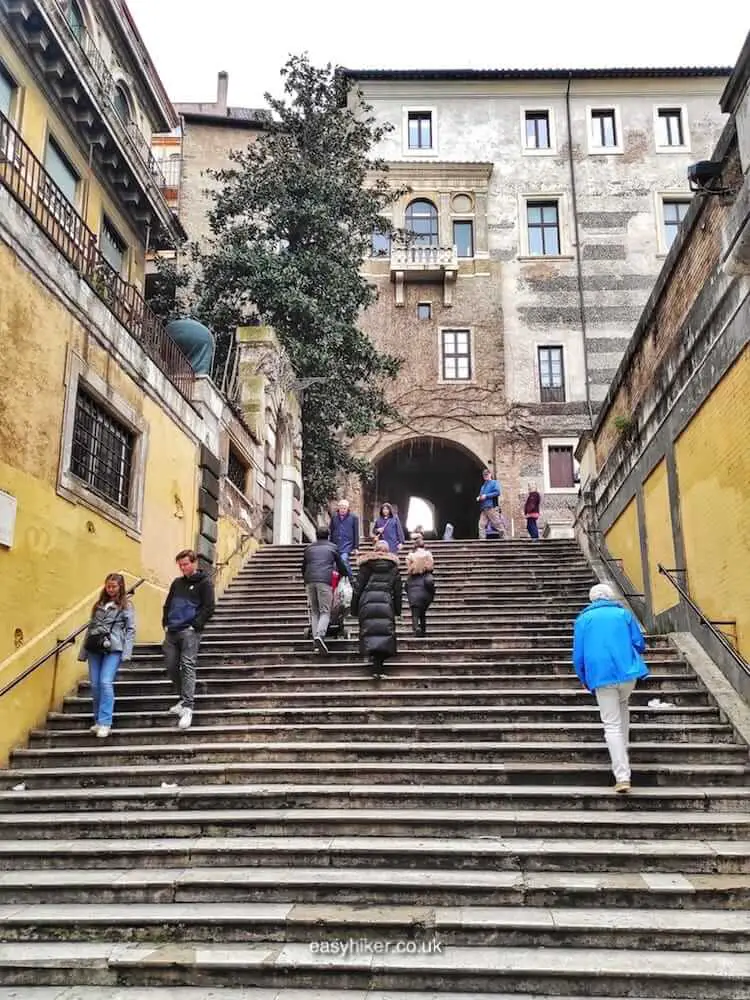
Monti is not short of tourist attractions. Above all, there is the Church of Santa Maria Maggiore, one of the four papal basilicas of Rome which are, although standing on Italian territory, fully owned by the Vatican.
Santa Maria, the world’s first Marian church, was first consecrated in 434, a mere three years after the Council of Ephesus had proclaimed Mary as the Mother of God.
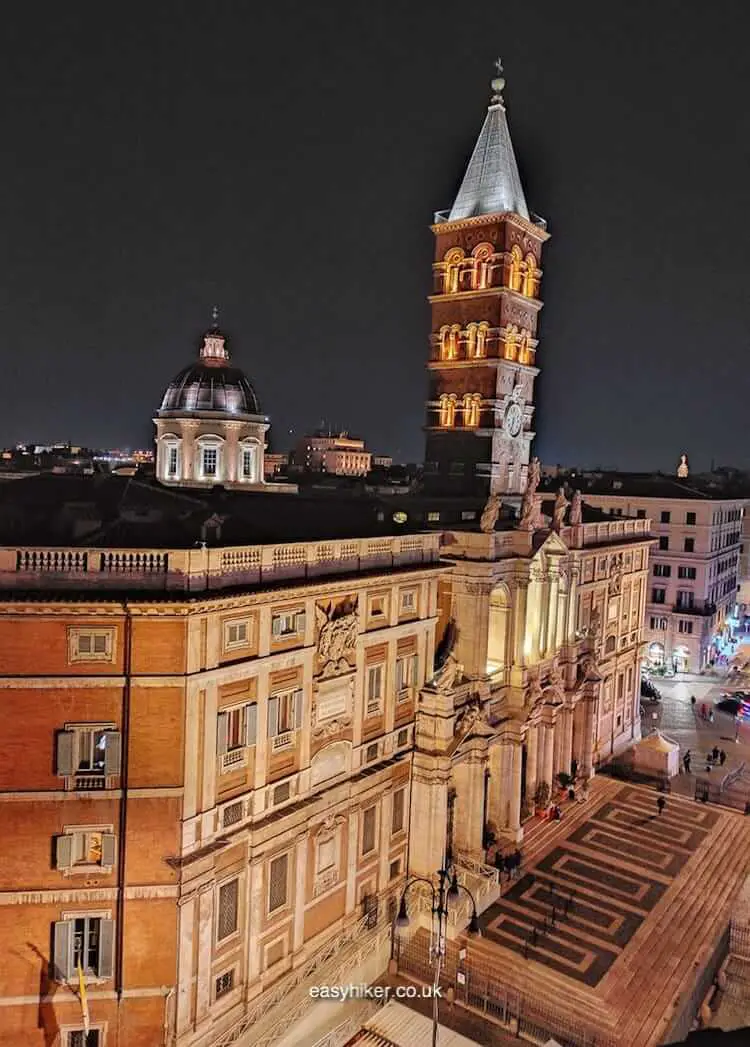
Like the other three papal basilicas in Rome (San Giovanni in Laterano, San Paolo Fuori Le Mura, and Saint Peter’s itself), Santa Maria has one very special door, a so-called Porta Santa, that is only opened during a Jubilee Year – such as 2025. (At the end of December, it will be bricked up again from the inside.)
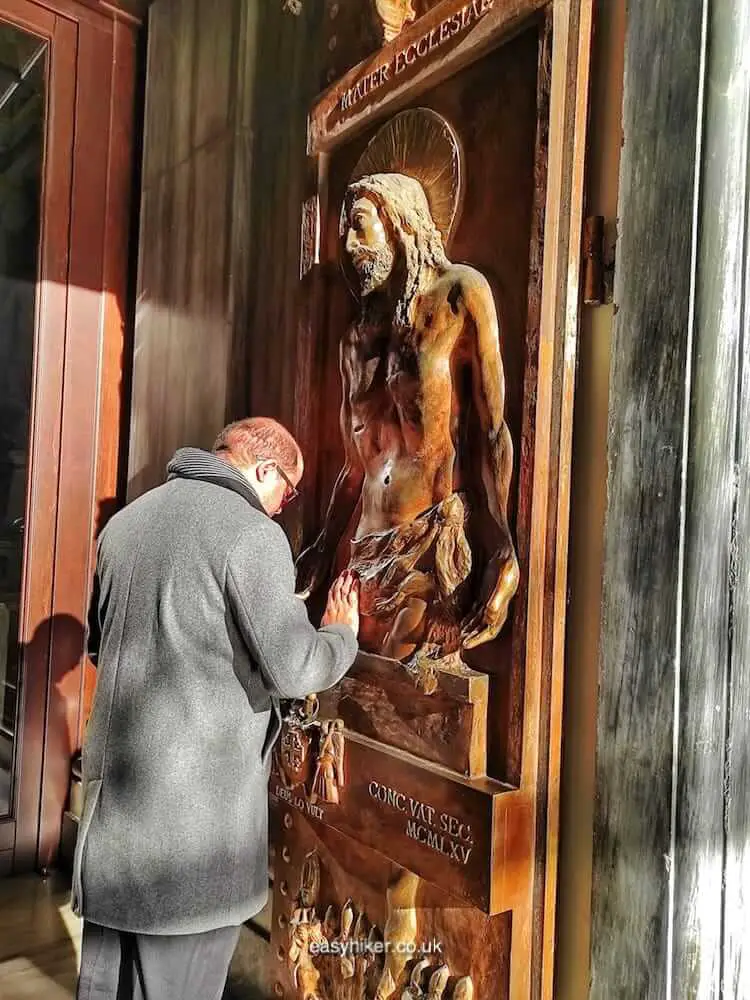
The quarter of Monti, meanwhile, offers more than tourist attractions and is equally full of interesting side streets and charming angles.
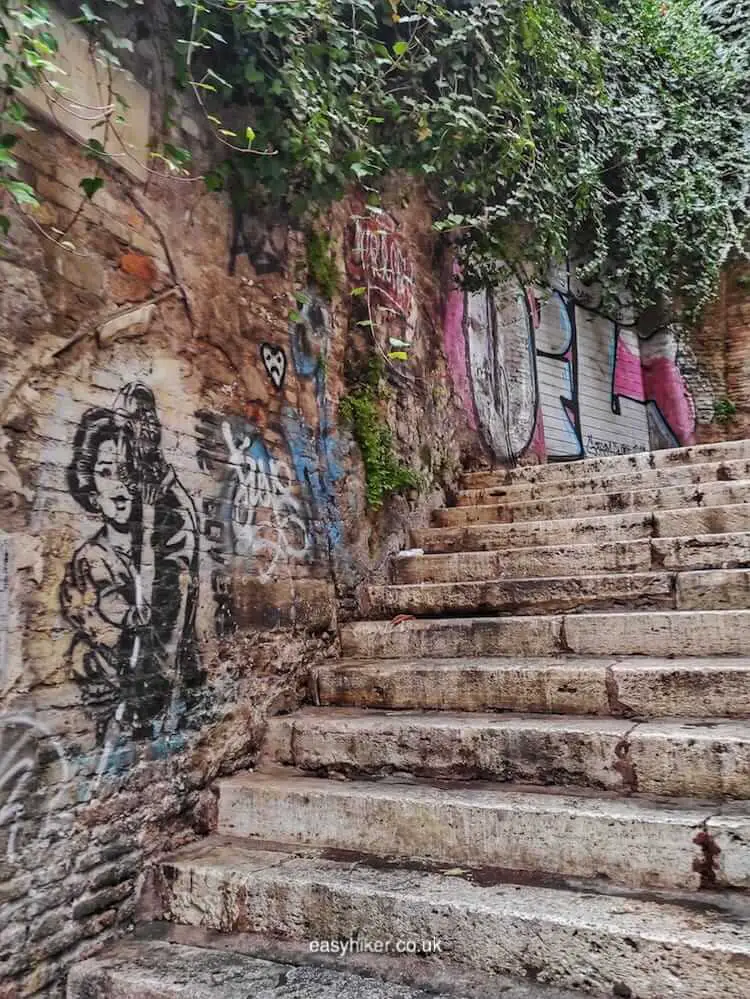
As a route to explore the quarter, we suggest the following: Take the Via della Quattro Fontane behind the Santa Maria basilica on Piazza Esquilino (that is one hill) and leave Via Viminale (the second hill) on your right before turning left into Via Nazionale, passing the Basilica di San Vitale al Quirinale (the third of the seven hills of Rome! and all that in less than 15 minutes!).
Turn left into Via Boschetto, cross Via Panisperna – perhaps make a detour to visit the picturesque church of San Lorenzo in Panisperna about 100 metres on your left hand side – …
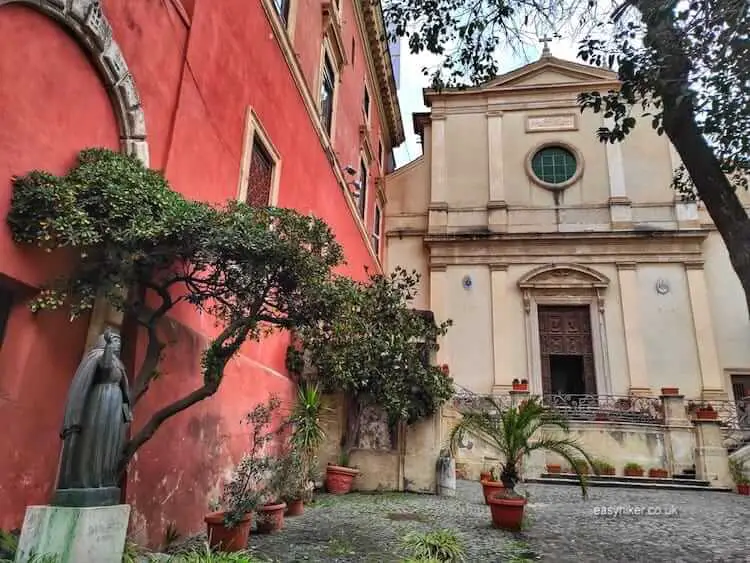
… and then take a left turn into Via degli Zingari for the Piazza della Madonna dei Monti. This is the most picturesque part of the quarter.
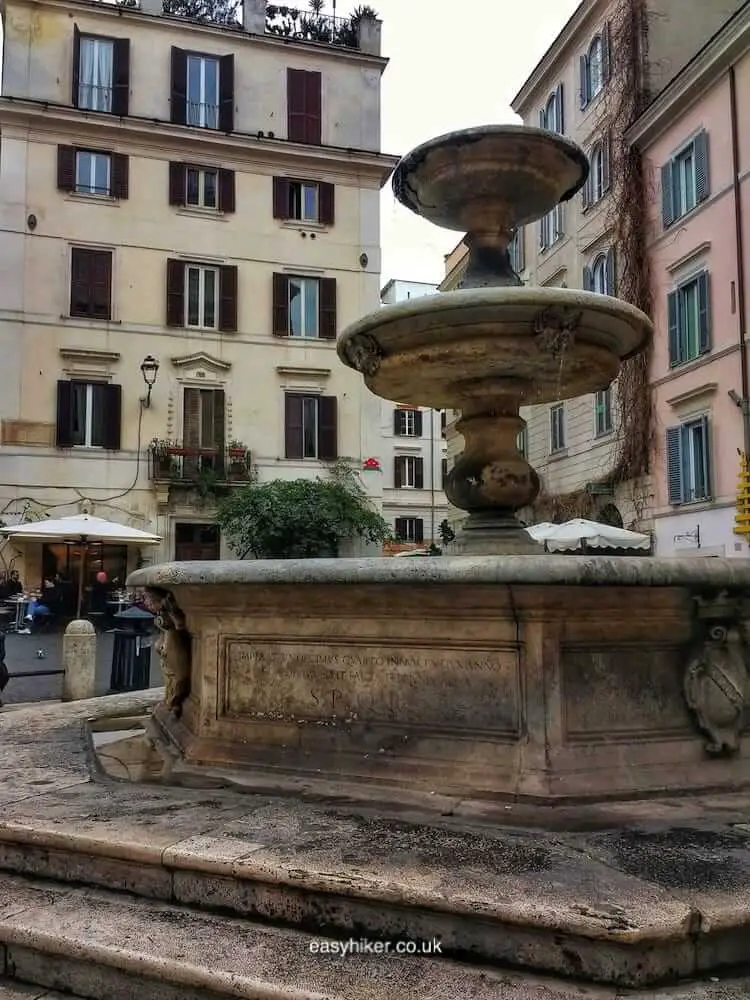
After that, feel free to climb the stairway across busy Via Cavour to San Pietro in Vincoli (the home of Michelangelo’s statue of Moses, one of his most famous works).
From there, cross over into the Parco del Colle Oppio, much of which is a fairly scruffy piece of grassland but which also houses one of Rome’s most famous ruins, the former palace of Emperor Nero called the Domus Aurea, the House Made Of Gold (of course, nothing less would do).
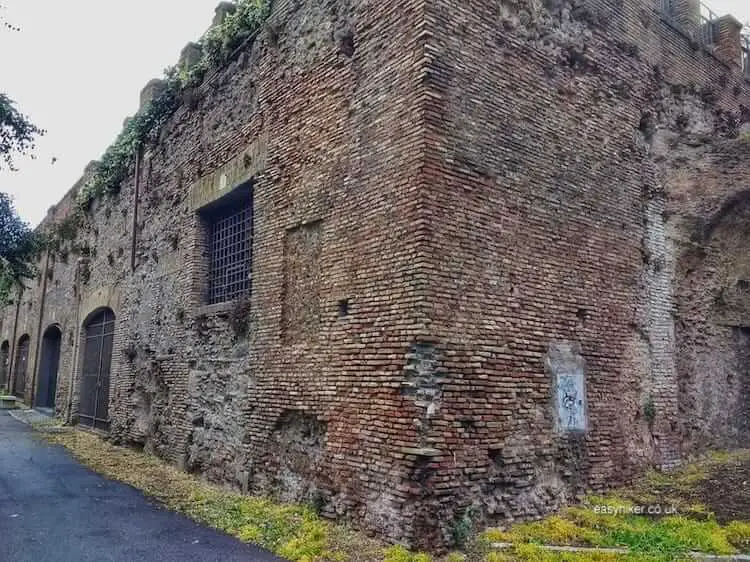
From the same side of the park, you also get great views of an even more famous ruin.
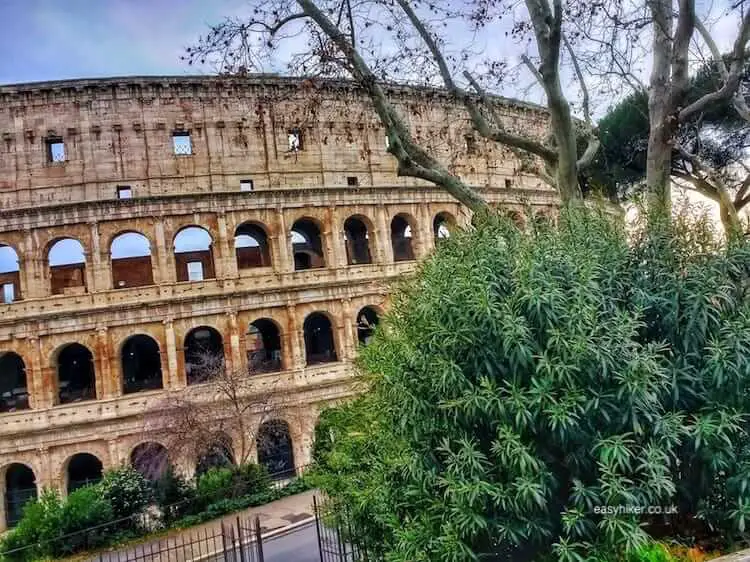
Bear in mind that we only suggest a few points of orientation. The best things of this – or, indeed, any other walk – are always the discoveries you make for yourself.
Such as the doorways you may peek into, for example, …
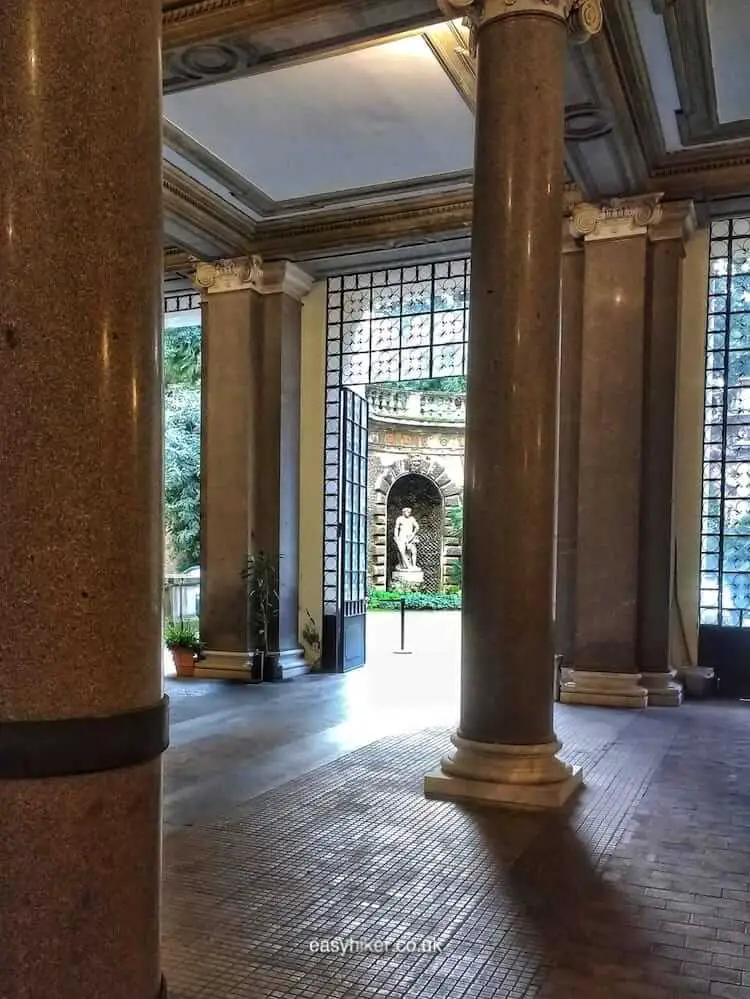
… on the “home stretch” back to Santa Maria Maggiore down the rather fancy Via Merulana.
Or take this wall.
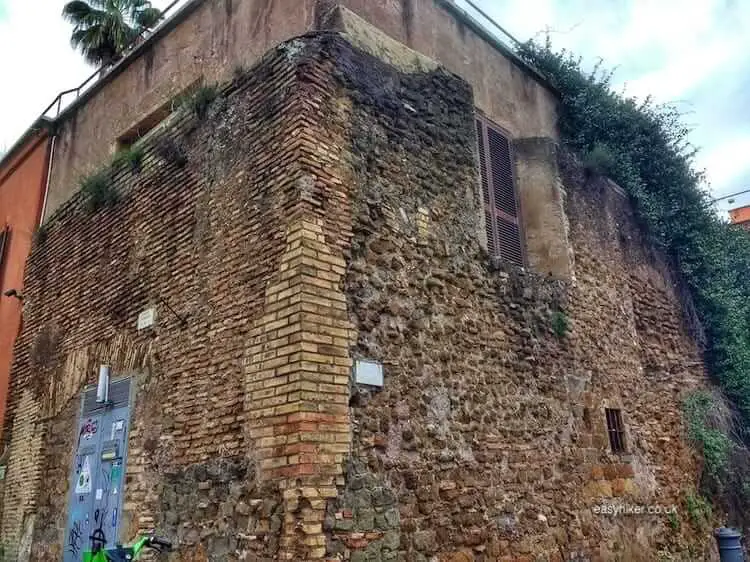
When was this built: 20 years, 200 years, 2000 years ago – who can tell? The only thing you can say for sure is that Romans apparently do not let a good wall go to waste. (Rome, like all cities, is a palimpsest manuscript where new lines are constantly superimposed on old lines without totally effacing them. The difference is that Rome’s palimpsest has been in longer use than any other.)
Monti is interesting not least because it is a showcase example for the ups and downs of Rome’s history. It was full of aristocratic homes in antiquity and became a popular quarter in the city’s very own “Renaissance” after the return of the papal court from Avignon in 1420.
In between, Monti had been virtually abandoned: following the Barbarian invasions of late antiquity, Rome’s aqueduct system collapsed and water could no longer be pumped up the “monti”. The quarter’s inhabitants moved into the areas nearer the Tiber which – due to the easy availability of water – became the city’s most densely populated district in medieval times. More recently, Monti has closed this cycle and become très chic once again.
The “district of the mountains” may be hard to pin down on a map of ancient Rome but is easy to reach in the modern world. All roads lead to Rome, it is often said, but inside the city, (nearly) all public transport routes – Metros and tramways, but most buses, too – lead to or intersect at the Termini station.
Wherever you are in Rome: you are almost always just one public transport ride plus a five-minute walk away from Santa Maria Maggiore.
Next week, we will go a little further afield in the Eternal City. Be ready to put on your walking shoes for our visit of Rome’s most scenic urban trail. We hope to see you then!
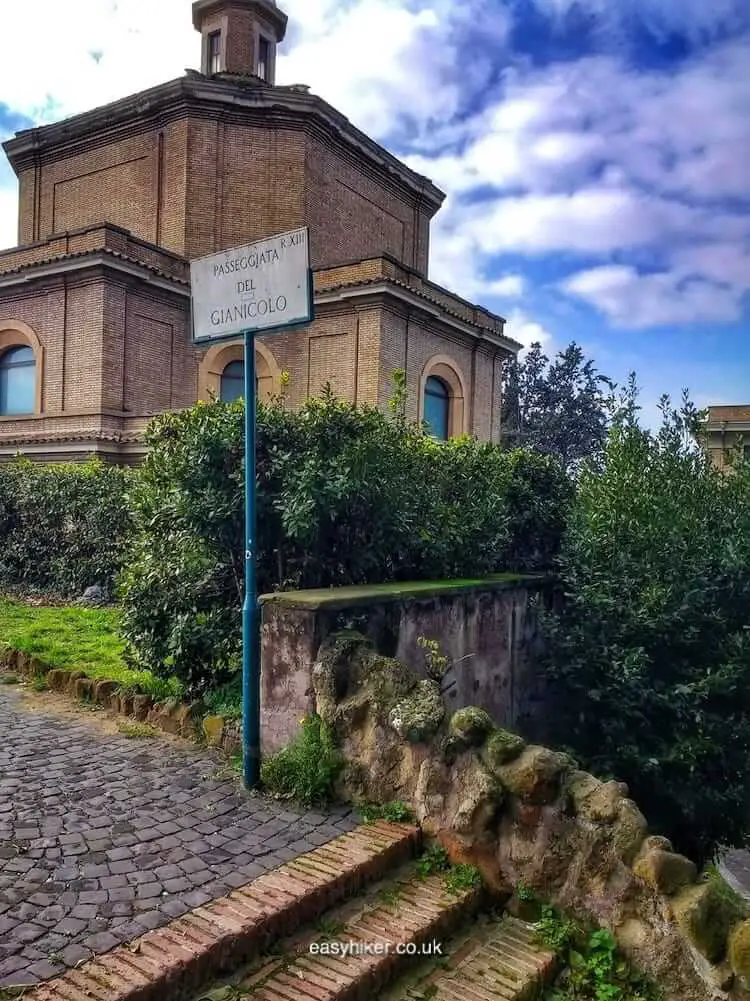

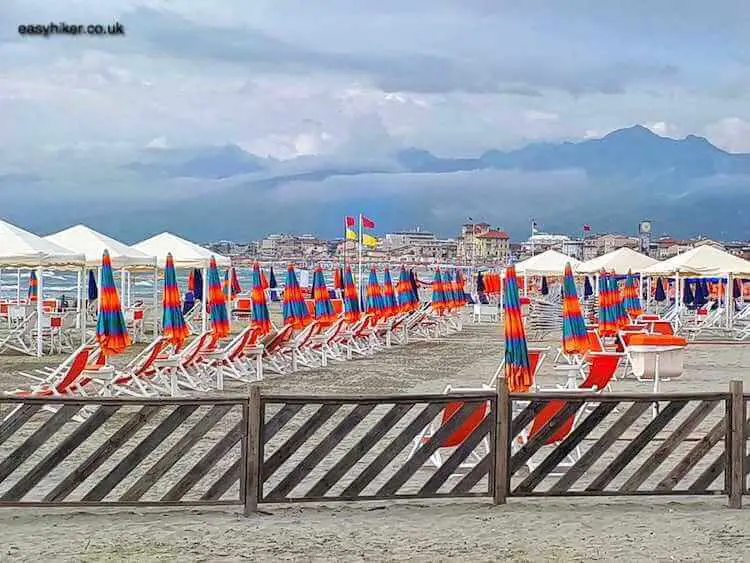
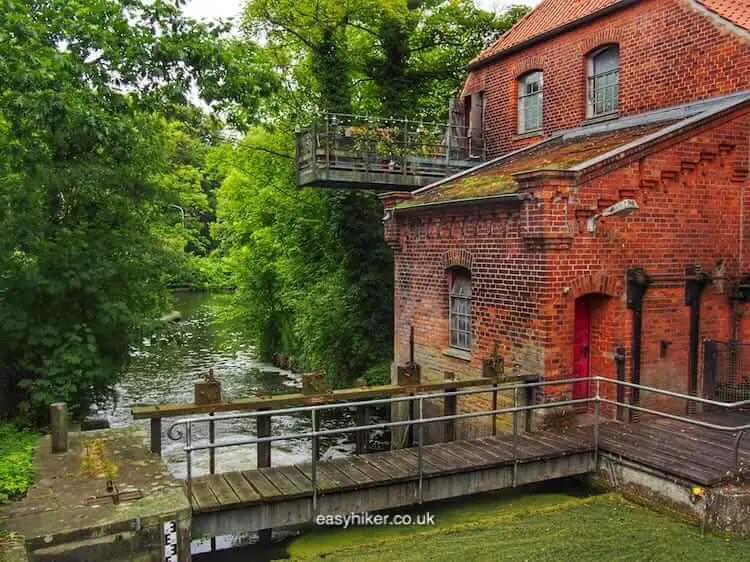
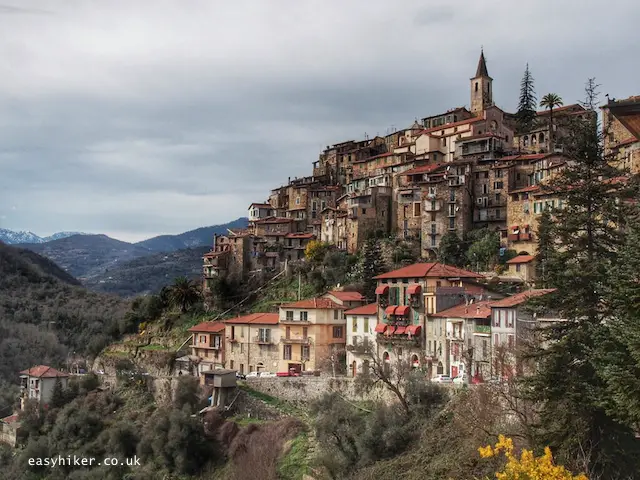
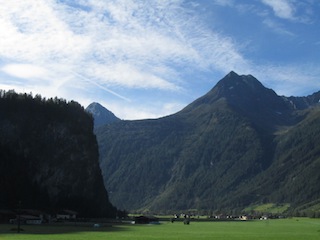

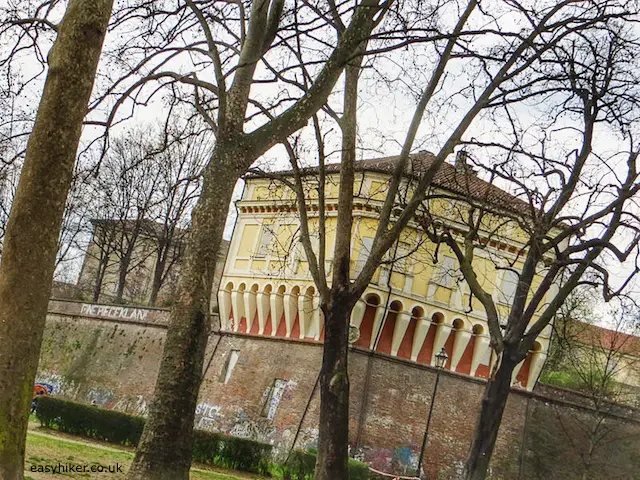
Sorry to hear of your present predicament. Surely, it will turn out ok. You will always have Italy, which is waiting for your visit.
Great tour! We are living vicariously through your travels while we are awaiting our residency permit renewal in Greece – until we have those plastic cards in hand, we aren’t allowed to travel in Schengen countries (sigh, . . .like Italy!) We are coming upon a year now so hopefully in another few months we will have them and can return to Italy!